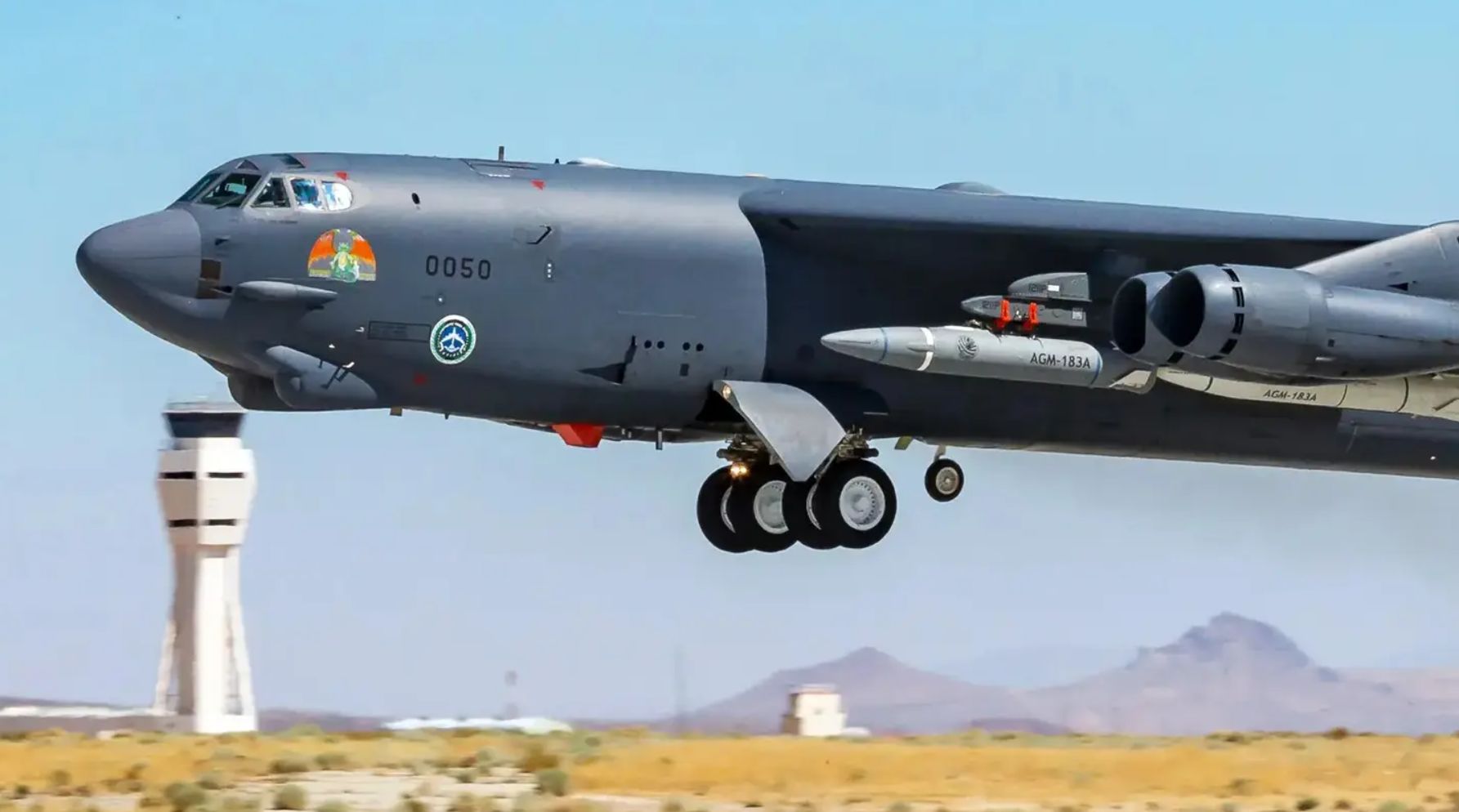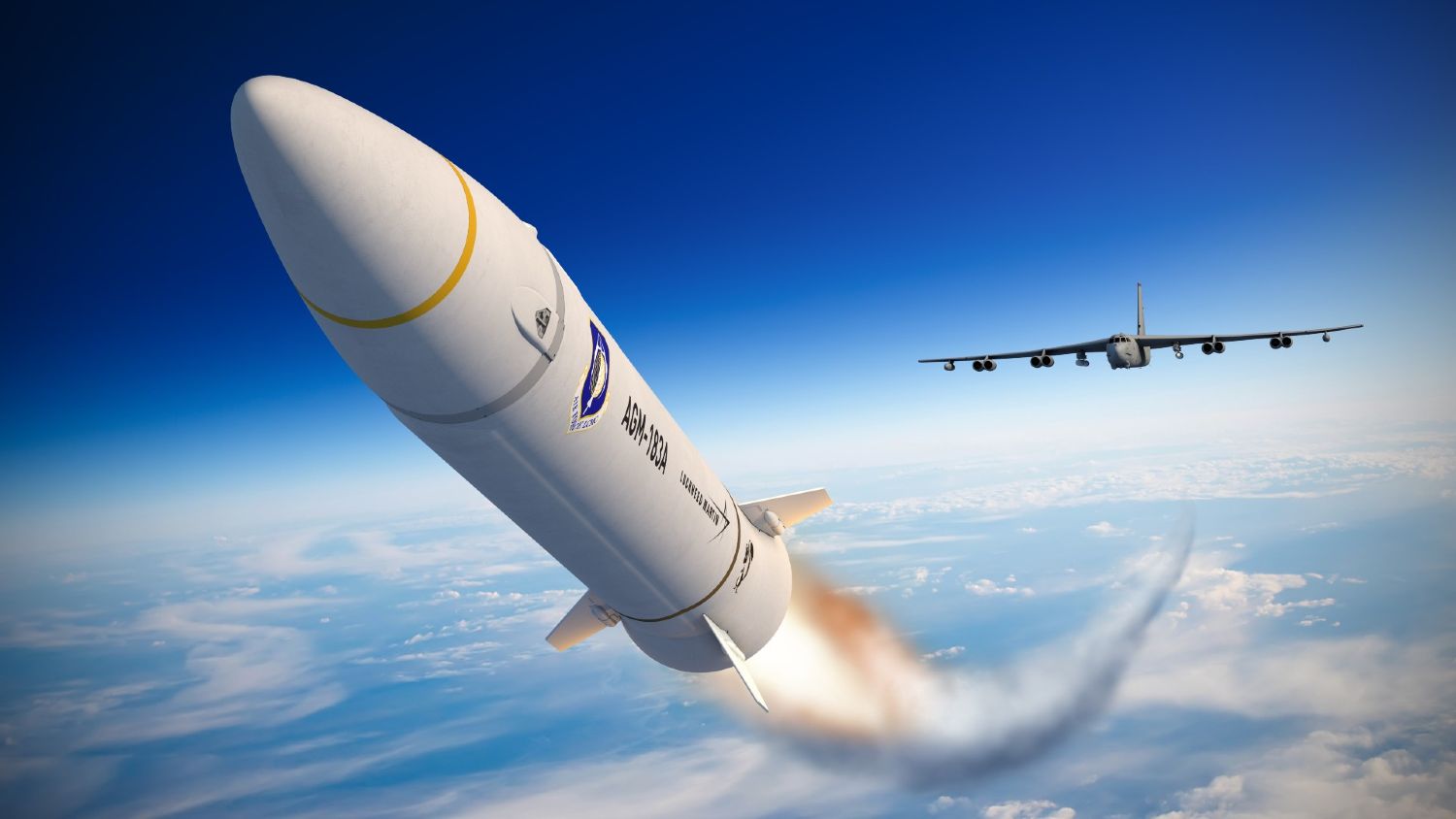The US Air Force (USAF) Acquisition chief told Congress this week that the service has decided against buying the much-hyped AGM-183A Air-launched Rapid Response Weapon after the end of its prototyping phase. The decision comes amid cascading test failures.
US Air Force Secretary Frank Kendall confirmed earlier this week that the latest test involving the ARRW was unsuccessful.
“Those tests that we just conducted were not successful. We did not receive data from the tests that we needed,” he said at a congressional hearing.
The AGM-183A ARRW is a long-range hypersonic missile designed by Lockheed Martin for the USAF. Until its latest test, the missile was expected to improve USAF’s hypersonic strike capability to attack heavily defended, high-value targets such as enemy military bases and surface warships at stand-off ranges.
In December last year, the service announced that a B-52H Stratofortress bomber successfully released the first All-Up-Round AGM-183A Air-launched Rapid Response Weapon off the Southern California coast.
However, the USAF has come a long way with its hypersonic testing since. The death knell on the program was sounded just days after the failed test.
It has since given rise to speculations that the service would now focus on the Hypersonic Attack Cruise Missile (HACM), the other hypersonic program in the USAF kitty.

The hearing did not touch on the scrapping of the ARRW. However, Air Force Spokesperson said, “We are going to finish ARRW testing, then we are going to make a procurement decision, but right now, we do not have any money planned in the five-year budget for ARRW.”
In written testimony provided to a House Armed Services subcommittee, Air Force Assistant Secretary for Acquisition Andrew Hunter stated that the service does not “currently intend to pursue follow-on purchase” of the ARRW following the conclusion of two further tests.
“While the Air Force does not intend to pursue follow-on procurement of ARRW once the prototyping program concludes, there is an inherent benefit to completing the all-up round test flights to garner the learning and test data that will help inform future hypersonic programs,” Hunter wrote.
“There is an inherent benefit to completing the All-Up Round (AUR) Test Flights (ATFs) to garner the learning and test data that will help inform future hypersonic programs and, potentially, leave behind capability support,” Hunter added.
Another takeaway from this hearing was Hunter’s announcement on the ARRW funding. He informed the committee that the Air Force requests research, development, test, and evaluation funding of $150.3 million for the fiscal year 2024 to “finish” the ARRW program.
So, the ARRW program scrapping may be bad news for its manufacturer Lockheed Martin, but it may come as a significant boost to other contractors.
For instance, Raytheon Technology which is currently working on the HAWC may have a reason to rejoice as the attention shifts to its program, with the ARRW out of the fray.

All Eyes On The HACM?
The development of hypersonic weapons is a key priority for the US, especially in light of China’s and Russia’s advancements. Currently, Beijing and Moscow are the only countries with operational hypersonic weapons. In contrast, the US is still playing catch up.
The Hypersonic Attack Cruise Missile (HACM) program, which aims to create a smaller, less expensive cruise missile based on air-breathing propulsion technology, is another project the USAF is exploring in addition to ARRW. Boeing and Raytheon are Lockheed Martin’s rivals for the HACM program.
Appearing before the House Appropriations Committee on March 28, US Air Force Secretary Frank Kendall said, “We’re more committed to the HACM at this point than we are to ARRW.”
It’s important to note that the HACM is considerably smaller than the ARRW, allowing it to be transported by a broader range of platforms, including various tactical planes. As a result, the Raytheon is fundamentally more adaptable than the larger ARRW, which has only ever been mounted on the B-52H strategic bomber and may one day be a viable alternative for fighter jet armament.
The USAF’s F-15EX fighter aircraft will be the first to be certified to carry the new HACM, as the fighter jet has a larger weapons payload capacity than the F-35 fighter, as per a previous EurAsian Times report.
There was once a possibility that the ARRW would even become the first operational hypersonic weapon in the United States, with an expected operational date of 2022. However, the likelihood of HACM entering service appeared to have increased more recently.

The ARRW cancellation means the service could have to wait longer to put a hypersonic missile into operational duty. Now that the Air Force is down to only one major hypersonic missile program, at least in the unclassified realm, it puts much pressure on Raytheon and HACM.
But now all eyes will be on the HACM, which may be added to the Air Force’s inventory as early as 2027 and is being created with input from Australia, which previously collaborated with the United States on the Southern Cross Integrated Flight Research Experiment (SCIFiRE) project.
Because the technology supporting HACM “has been reasonably successful,” Kendall claimed that the Air Force has funding in its five-year plan “to move HACM forward.”
For HACM in 2024, the Air Force is asking for $382 million, Hunter noted in his prepared statement. He wrote that the “critical design” and “digital ecosystem” maturation required to validate the design and flight test hardware in preparation for a flight test in fiscal 2025 would be funded by this money.
- Contact the author at sakshi.tiwari9555 (at) gmail.com
- Follow EurAsian Times on Google News




